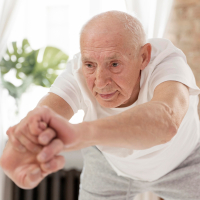
Background
Parkinson's disease (PD) is a progressive disorder of the nervous system that mostly affects people over 60. Symptoms begin gradually and include movement issues, such as trembling, stiffness, slowness of movement and balance, and coordination issues. People with PD can also have emotional and mood problems, fatigue, sleep problems, and thinking difficulties. The disorder cannot be cured, but the symptoms can be relieved, for example, with medicine or surgery. Moreover, people with PD may benefit from physiotherapy or other forms of physical exercise, such as dancing. But it remains unclear if some of these exercise types work better than others.
What was our aim?
We wanted to find out what type of physical exercise works best to improve movement and quality of life for people with PD. We also wanted to find out what type of exercise causes the least unwanted effects.
What did we do?
We searched for studies that compared physical exercise with no physical exercise or with another physical exercise type. We compared and summarized their short-term results, and rated our confidence in the evidence, based on factors such as study methods and number of people included. We only studied short-term results.
What did we find?
We found 156 studies on different physical exercise types for people with PD. The studies included a total of 7939 people. The smallest study was conducted with 10 people and the biggest with 474 people. The average participant age was between 60 and 74 years. The studies were conducted in countries around the world, with the highest number (34) in the USA. Of the included studies, 71 (3196 people) provided information on movement; 55 (3283 people) provided information on quality of life, and 85 (5192 people) provided information on unwanted effects.
What are the key results?
Many types of physical exercise worked well for people with PD compared to no physical exercise.
Dance has a moderate beneficial effect on movement. Aqua-based training, gait/balance/functional training, and training that consists of several exercise types (i.e. multi-domain training) might have a moderate beneficial effect on movement. Mind-body (e.g. tai chi or yoga) and endurance training might have a small beneficial effect on movement. Flexibility training might have little to no effect on movement. We are very uncertain about the effects of strength/resistance training and the PD-specific physical therapy "Lee Silverman Voice training BIG" (LSVT BIG) on movement.
Aqua-based training probably has a large beneficial effect on quality of life. Endurance training might have a moderate, and gait/balance/functional and multi-domain training might have a small beneficial effect on quality of life. We are very uncertain about the effects of mind-body training, gaming, strength/resistance training, dance, LSVT BIG, and flexibility training on quality of life.
Our confidence in the effects ranged from high to very low. When our confidence was reduced, it was often because of two reasons. First, not all of the studies provided information on movement or quality of life from all the people who participated. Second, studies were very small.
Only 85 studies provided some information about unwanted effects, and mostly only for the physical exercise groups, not the groups who did not do exercise. No unwanted effects were reported in 40 studies. No serious unwanted effects were reported in four studies. Unwanted effects were reported in 28 studies. The unwanted effects reported most frequently were falls (18 studies) and pain (10 studies). We could not say what type of exercise causes the least unwanted effects because studies did not provide information about everything we needed. That is why we are very uncertain about the results on unwanted effects.
What does this mean?
We found that many types of physical exercise can help improve movement and quality of life for people with PD. We found scant evidence that certain exercise types work better than others. Therefore, for movement and quality of life, we think physical exercise is important, but the exact exercise type might be less important. Still, it is possible that some symptoms may be relieved best with specific types of training made for people with PD. The types of training we included seemed to be quite safe.
Larger, well-designed studies are needed to increase our confidence in the evidence. Also, more research is required to understand the features that influence the effects of exercise. More studies involving people who have worse symptoms could help extend the results to more people with PD.
How up to date is this review?
The evidence is up to date to May 2021.

